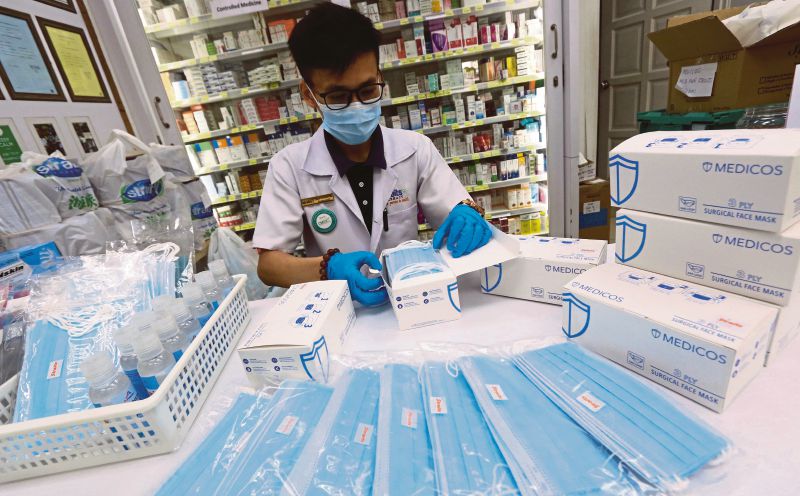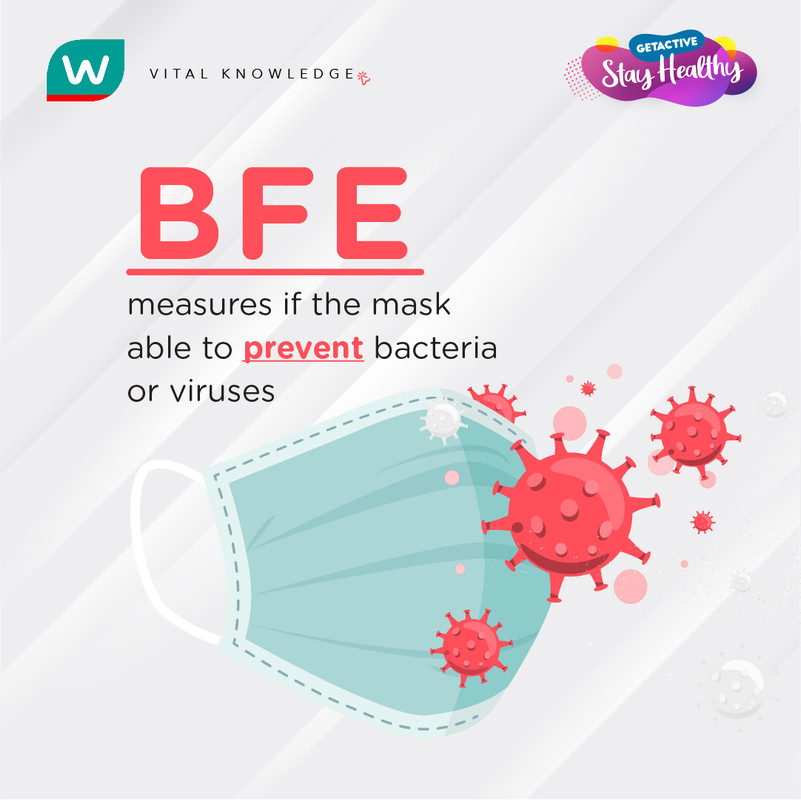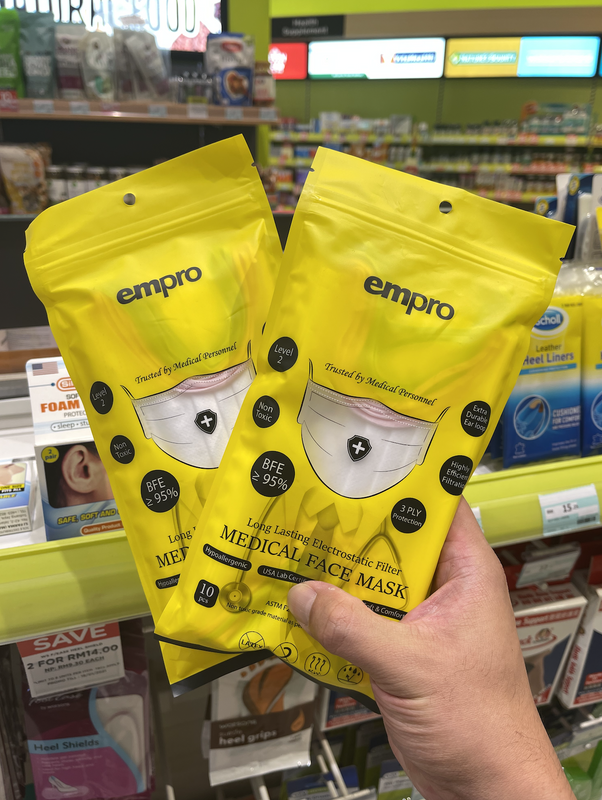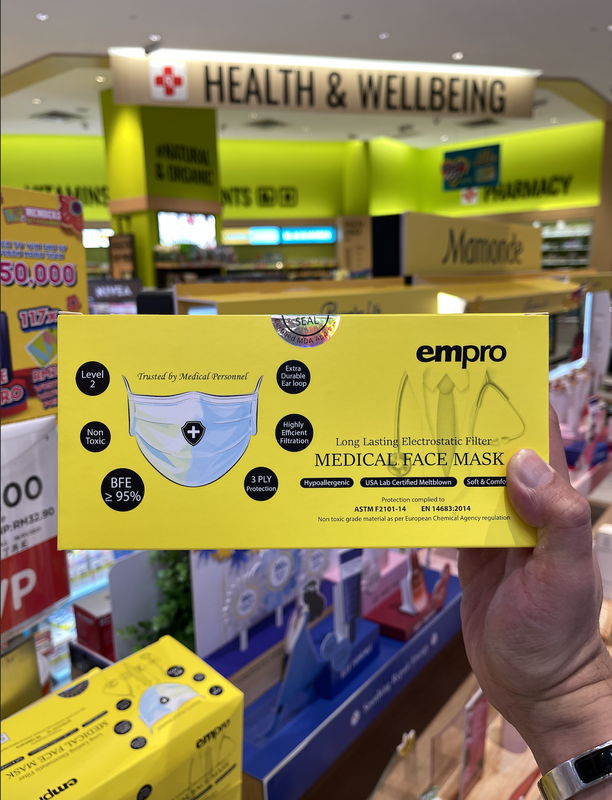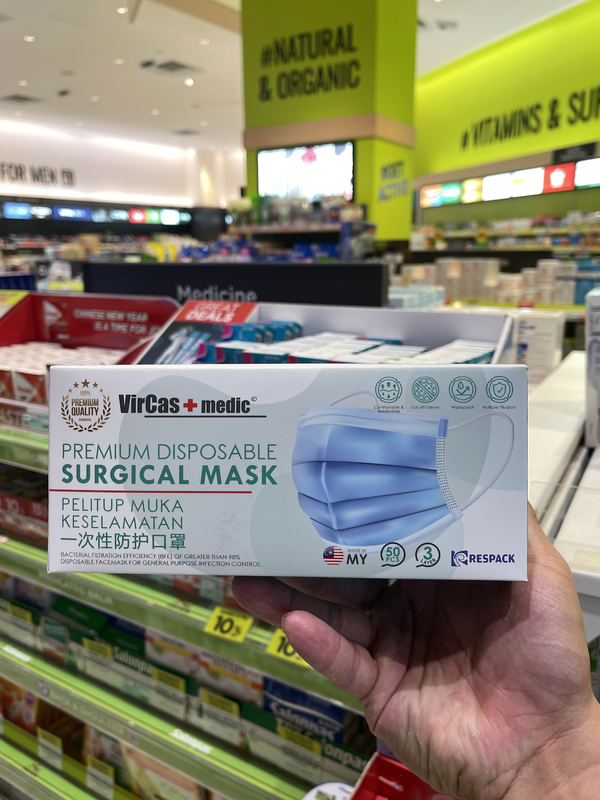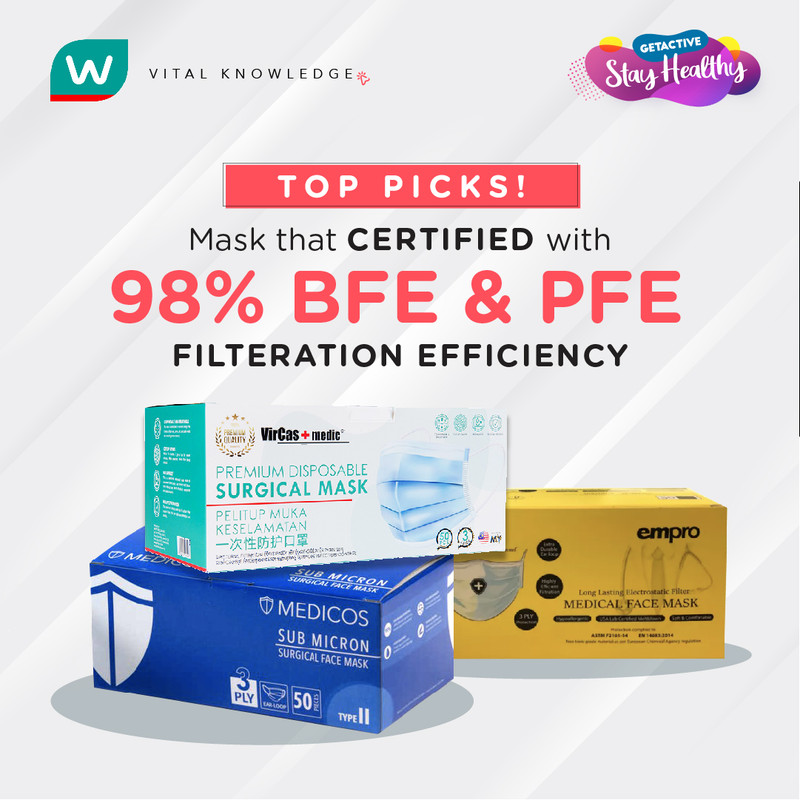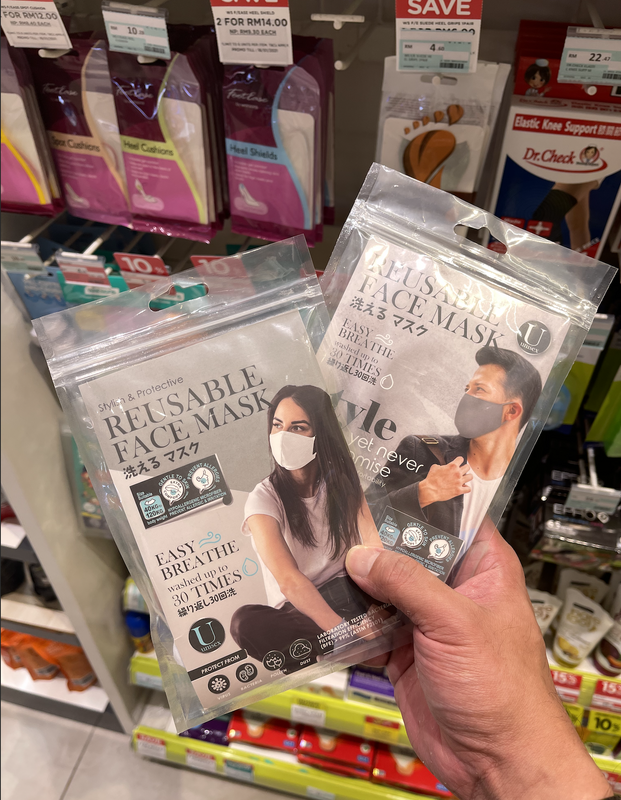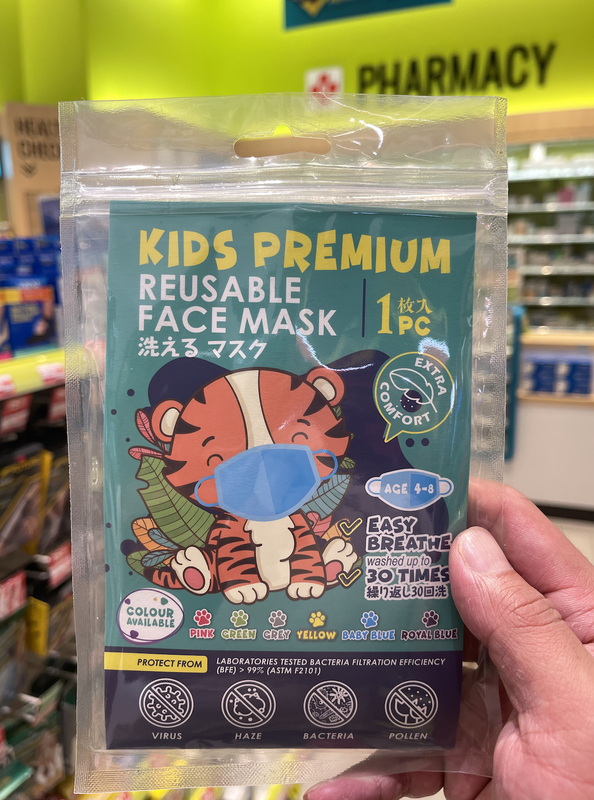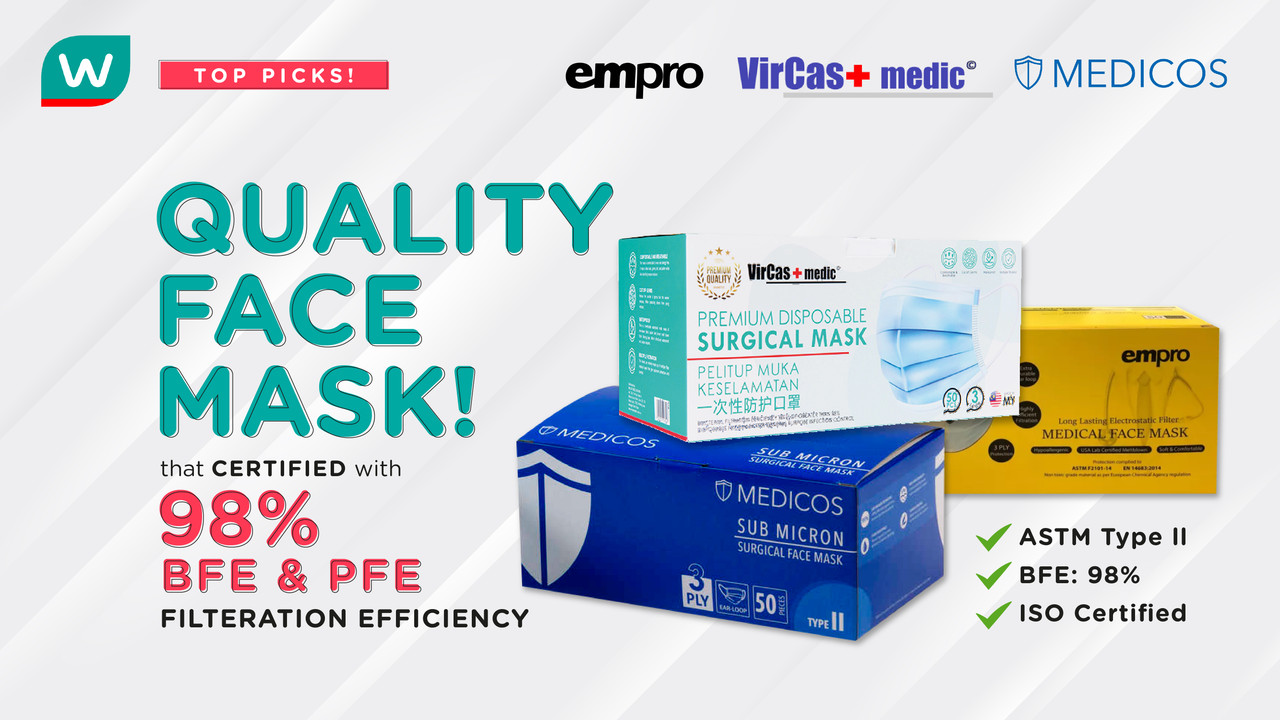Is Your Face Mask Actually Protecting You? Here Are 4 Things To Look Out For
Check if your face mask meets these four specifications!
Nowadays, there are so many different types of face masks out there—medical/surgical, cotton, batik, silk, and many more
Wearing a face mask helps to not only protect you, but also everyone around you during this pandemic. It is now part of our everyday lives, and we can no longer leave the house without one.
But while you rely on your trusty face mask for protection, have you ever wondered how effective the one you're using is?
Time and time again, we are advised to opt for medical or surgical masks, as this type of mask provides the best protection
A medical or surgical mask is a loose-fitting disposable mask that protects your nose and mouth from contact with droplets, splashes, and sprays that may contain germs.
At the same time, these masks also filter out large particles in the air, as well as control incoming particles from infected people who cough and sneeze. That's how they help to avoid contamination of the surrounding zone.
Most importantly, medical and surgical masks have undergone quality tests to ensure that they are up to standard.
The American Society of Testing and Materials (ASTM) is a global organisation that develops and publishes technical standards for a wide range of products, which includes face masks
All tested and approved face masks recommended for use during this pandemic are usually three ply ones, consisting of three individual layers:
1. Outer layer
A layer of non-woven fabric. This serves as a waterproof barrier that repels droplets and moisture expelled by people while talking, coughing, or sneezing.
2. Middle layer
Acting as filter, this layer is usually created from polypropylene (PP) melt-blown non-woven fabric. It has electrostatic properties which helps to trap aerosolised particles via electrostatic attraction.
An effective middle layer should have electrostatic properties which enables it to stick on a piece of glass or easily pick up shredded paper.
Important tip: Do not spray your mask with alcohol spray, as alcohol can destroy the electrostatic properties of the middle layer. This will make it ineffective in trapping viruses. Use a non-alcohol antimicrobial spray instead.
3. Inner layer
Made from a hydrophilic material, this layer absorbs droplets and moisture created during normal breathing. As it is always in contact with your face, the material is softer, to reduce friction and cause less skin irritation.
Here are four specifications for a good quality medical or surgical face mask, as determined by ASTM:
1. Your mask must have a high Bacterial Filtration Efficiency (BFE) rate of at least 95%
BFE measures how well a medical face mask filters out bacteria.
When face masks are subjected to the ASTM test by Nelson Labs, a microbiology testing lab, they will be categorised as Type I, Type II, and Type III. Both Type II and Type III medical masks have a BFE rating of 98%, giving you high protection from the spread of bacteria.
2. When your mask has higher fluid resistance, you will have optimum protection
Fluid resistance reflects the surgical mask’s ability to minimise the amount of fluid that could transfer from the outer layers through to the inner layer.
One of the first lines of defense of a medical mask is its outer layer, so it is essential that the fluid blocked by this waterproof barrier doesn't transfer to the inner layer that's in contact with your nose and mouth.
3. The higher the percentage of Particulate Filtration Efficiency (PFE), the better the mask efficiency
This test measures how well a medical mask filters sub-micron particles, with the expectation that viruses will be filtered in a similar manner. Thus, the higher your mask's PFE percentage, the better it is at filtering out harmful particles.
4. Ensure your mask has proper ISO Certification
All medical face masks must be tested to an international standard (ISO 10993-5, 10) for skin sensitivity and cytotoxic tests. This is to ensure that the mask doesn't contain any materials that are harmful to the wearer.
It's important for us to choose our masks wisely and to purchase them from well-trusted brands.
Here are three face mask brands you can get at Watsons which adhere to ASMT's standards:
All three of these brands produce quality face masks that are ASTM Type II and certified with 98% BFE and PFE filtration efficiency
If you're environmentally conscious and prefer to use reusable fabric face masks, make sure to get a good quality one
Your fabric face mask should be well-made with approved materials, and approved with a high BFE rating of above 98%. Trusted fabric face masks will have passed the same tests as medical and surgical face masks, so make sure you do your research before buying.
As a fabric face mask is reusable, it is essential to always keep it clean and wash it daily. Make sure to comply with the limited wash times and replace it upon reaching your mask's specific number of washes. This is to ensure that the BFE rating is well-preserved.
We all have to do our part to keep everyone safe, and a huge part of that is making sure to only use well-made and certified face masks
Support locally-made face masks, as trusted brands from local makers have completed all required tests. They are also more reliable, as all the materials they use are traceable from the source.
Looking to buy quality face masks? Head over to your nearest Watsons store or shop via their online store!
If you have any questions about your face mask, do feel free to speak to any of the Watsons Pharmacists who will be happy to answer all your queries.
Watch the video below for advice from a Watsons Pharmacists on how to choose a good face mask:
